Features/Analysis
UMTH: The Cancer Centre Under Professor Ahidjo’s Led Management Team (1)

Special Report
UMTH: The Cancer Centre Under Professor Ahidjo’s Led Management Team (1)
By: James Bwala
What’s different now? Numerous changes have occurred since Professor Ahmed Ahidjo assumed management of the University of Maiduguri Teaching Hospital in northeastern Nigeria. Nobody entering the hospital could possibly miss the influence of the Ahidjo-led Management Team. As we used to say of darkness to light or backwardness to forwardness in expressing improvements in our academics in school back then, they creatively relocated the hospital from Dimma to Limma. The Cancer Center at the UMTH is one of the topics on which this article focuses.
One of the long-standing accomplishments of the Ahidjo administration in hospital administration is this. It took a lot of effort on all fronts—intellectually, practically, and physically—to try to achieve anything for the residents of Borno state, the Northeast of Nigeria, and beyond. The CMD was in a unique position to negotiate for this, and as a result, the Cancer Centre is now the largest in sub-Saharan Africa.
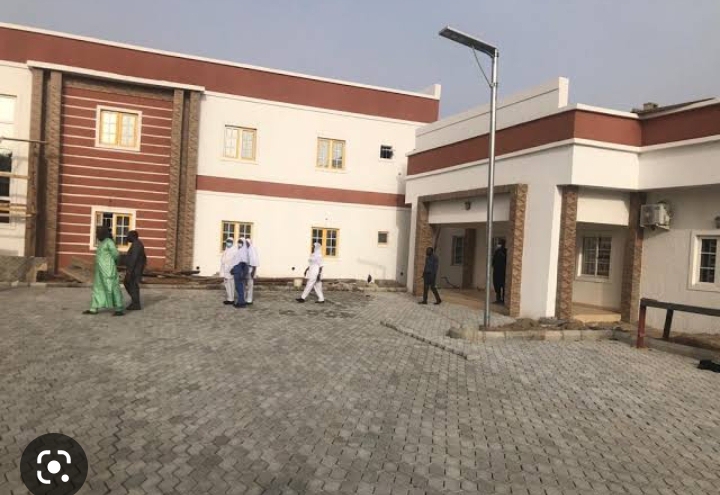
According to a study on cancer in Africa, the continent’s 102 total cancer treatment facilities—including general oncology clinics, gynecologic oncology or other single-organ malignancy units, pediatric oncology clinics, and palliative care facilities—are insufficient to meet the rising needs of the continent’s cancer-affected population. The International Agency for Research on Cancer projects that during the next five years, there will be more than one million new instances of cancer in Africa per year. Along with the tremendous loss of human life, this statistic has a substantial economic cost. However, the majority of African countries have a long way to go before improving their ability to combat cancer.
READ ALSO: https://newsng.ng/2023-presidency-tinubu-appoints-31-yr-old-comrade-muhammad-mahmud-as-national-media-coordinator/
When the concept to create a cancer center in the hospital was floated, this may have been one of the goals of the Ahidjo management team at the UMTH. But to destroy the big behemoth, an elephant needs more than one shot. Hence, the requirement for all hands to be on deck. In an effort to get things done, the CMD reached out to other Nigerians who could help turn this ambition into reality in a variety of ways. A member of the green chambers of the Nigerian National Assembly who represents the federal constituencies of Biu, Bayo, Kwaya Kusar, and Shani is one name that keeps popping up in conversation.
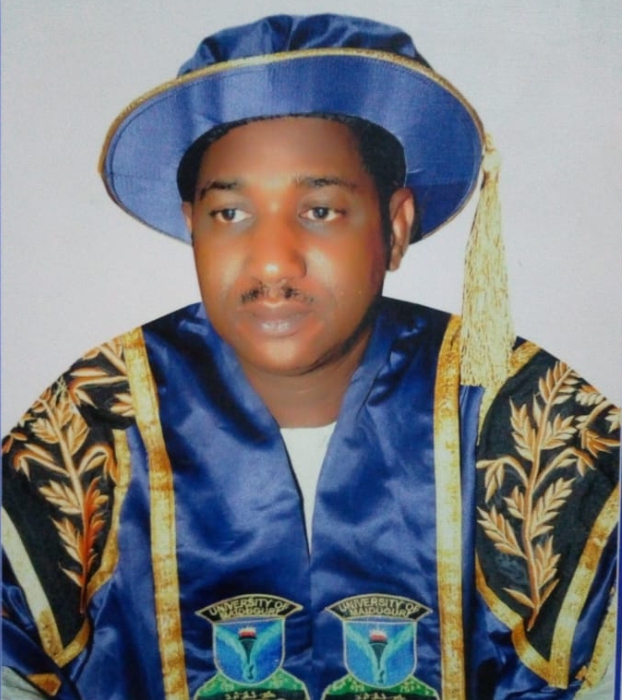
The CMD cited Hon. Muktari Betara Aliyu three times during a meeting at the UMTH Cancer Center. Additionally, Hon. Muktari Betara Aliyu was mentioned several times by Dr. Abba Ali Tijjani, a consultant clinical oncologist and head of the clinical oncology department at the University of Maiduguri. Dr. Tijjani is a beneficiary of the training provided for the proper taking of the center and was also kind enough to mention the hospital’s friends who helped the cancer center get to where it is today.
According to a survey, the survival rate for cancer patients in Africa is far lower than it is in high-income nations. Women with breast cancer, for instance, had an 82% 5-year survival rate in Europe, compared to 46% in Uganda, just under 39% in Algeria, and 12% in Gambia. Only the population growth rate may be used to compare the situation in Nigeria. In the past ten years, numerous research teams have examined the problem in an effort to pinpoint the root reasons and provide potential remedies. Although the research that has been published to date has identified many of the flaws in cancer care and articulated sound strategic concepts, no targets or deadlines have been set on a practical path to make the needed change.
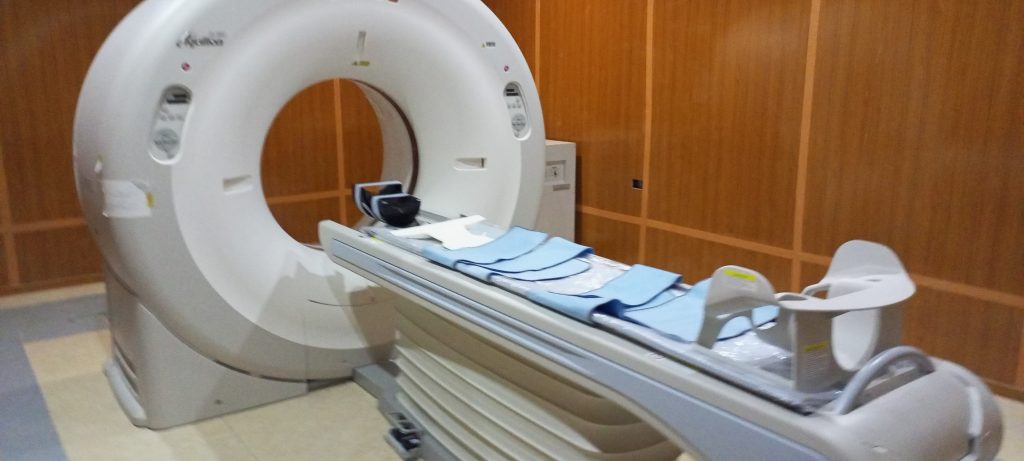
By the time the center is operational, the new University of Maiduguri Teaching Hospital (UMTH) Cancer Centre would have made a significant contribution to reducing Nigerians’ frequent use of medical tourism. The Cancer Center is the only facility in Nigeria with four bunkers and cutting-edge medical equipment to ensure that cancer patients receive top-notch care.
Recall that Alh. Mamman Mamuda, the Permanent Secretary of the Federal Ministry of Health, remarked of the UMTH during the inspection of projects completed in the Hospital that other cancer centers across the nation “are not up to the standard” of the UMTH Cancer Centre and lack the capacity. ‘From what I have observed on the ground, I can conclude that the UMTH is prepared to put an end to medical tourism in Nigeria,’ he claimed. ‘In terms of cancer management, UMTH is prepared to support cancer sufferers, much as President Muhammadu Buhari’s vision. We have already begun planning ways to make the UMTH a recipient of the Federal Government of Nigeria’s Cancer Support Fund.’ he added.
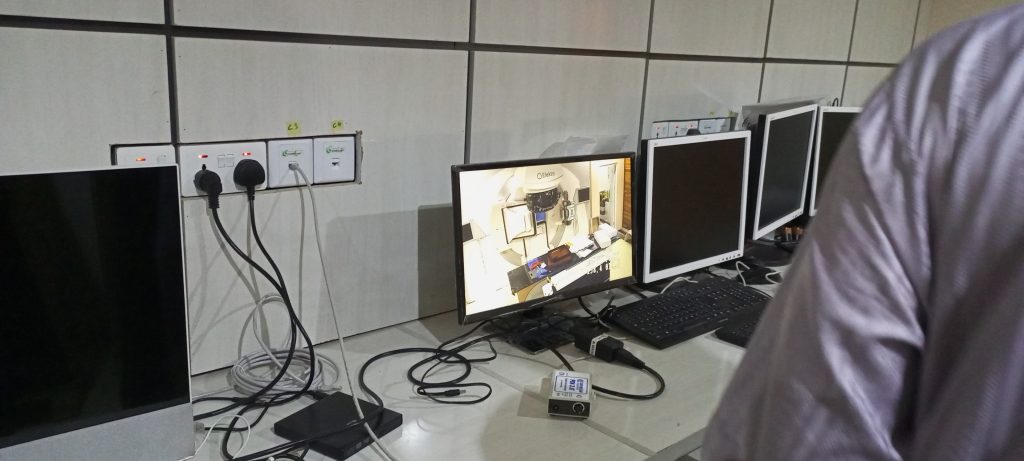
Adopted in 2011, the Brazzaville Declaration on Noncommunicable Diseases Prevention and Control in the WHO African Region confirmed that African countries are aware of the growing threat posed by noncommunicable diseases (NCDs), including cancer. The signatories agreed, among other things, to create prevention and control strategies, improve their health systems so they can lessen the burden of NCDs, find the funding needed to fight these illnesses, and enable their national health information systems to produce data on NCDs and their risk factors.
However, this direction is still making slow progress. Only 17 of the 46 nations that responded to a WHO survey in the African region in 2010 had operational cancer policies, strategies, or action plans. The few formal national cancer control plans (NCCP) already in existence lacked funding. According to research conducted in 2013 but not yet published (J.M. D’Angou, 2013 survey), just 11 of the 32 African nations had formal NCCPs, and in 17 more, such plans were still being developed. Only six of the 11 NCCPs that were already in place were governed by a steering committee, which would be necessary for proper operation.
The Cancer Center, which cost more than N5 billion to build, has the newest medical facilities in Sub-Saharan Africa, according to Professor Ahmed Ahidjo, Chief Medical Director of the University of Maiduguri Teaching Hospital. He also noted that the goal of UMTH is to prevent any medical issues from being referred elsewhere, “as the Epic Hospital in the NorthEast Region.” We also have two linear accelerators and two brachy therapists here, for a total of four bunkers. We are bringing the first linear accelerators into Nigeria with the nectar infinite. The second one, HD Versa, which the Federal Ministry of Health recently completed the purchase procedure for us, is the first to enter Sub-Saharan Africa and the most recent method used globally.
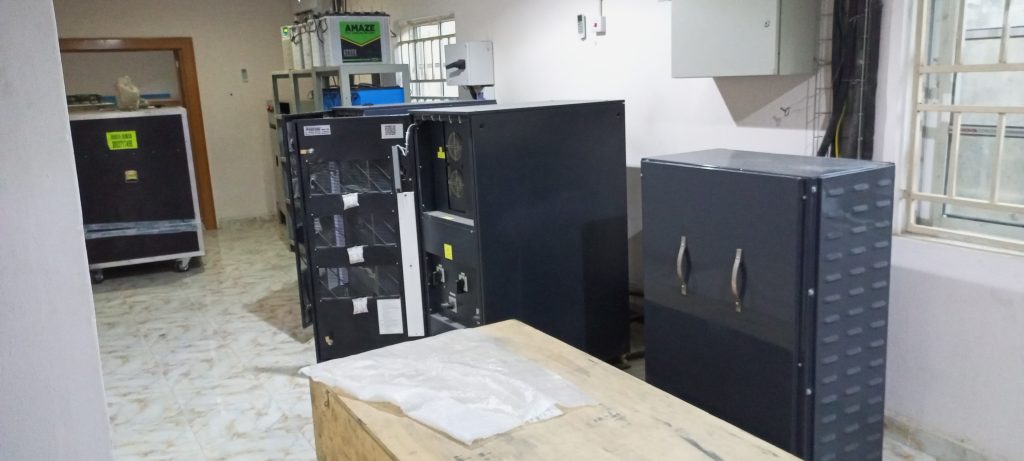
Dr. Abba Ali, the Consultant Oncology at the UMTH, indicated in a brief interview that plans to manage cancer must include the severity of the health issue, the most common cancer kinds, and their distribution by location, age group, and sex. Only properly operated national population-based cancer registries can give such information, but there aren’t enough of them on the continent.
The African Cancer Registry Network claims that just 22 member registries—not all of which are national registries—contribute to the network’s database from the sub-Saharan Africa region. Only five African registries were permitted to participate in the International Agency for Research on Cancer’s (IARC) periodic publication Cancer Incidence in Five Continents since many of them do not yet have the necessary levels of recorded data quality (volume IX).
The burden of cancer can only be calculated in the absence of exact numbers. Just under 850,000 new cases of cancer were reported in Africa in 2012, according to the IARC’s GLOBOCAN 2012 estimate of cancer incidence, prevalence, and mortality worldwide. The same year, nearly 600,000 fatalities were related to cancer. More than 735,000 deaths in 2020, as well as around 1,056,000 new cases (an increase of almost 24%).
The mortality/incidence ratio, which measures how well cancer care systems are working, was 72% in Africa in 2012, which is significantly higher than the ratio in high-income populations (for example, 44% in Europe). The outcomes in 2022 and 2023 are still a slight underestimation in terms of health policy issues. In order for the people of Borno state, the northeastern region, Nigeria, and indirectly the West African countries to benefit from the idea that emerged to bring healing closer to home, perhaps this explained why hospitals like the UMTH continued to knock on every door to seek the understanding of the people in this regard…. TO BE CONTINUED.
UMTH: The Cancer Centre Under Professor Ahidjo’s Led Management Team (1)
Features/Analysis
Herbert Wigwe’s Death And The Black Box Metaphor
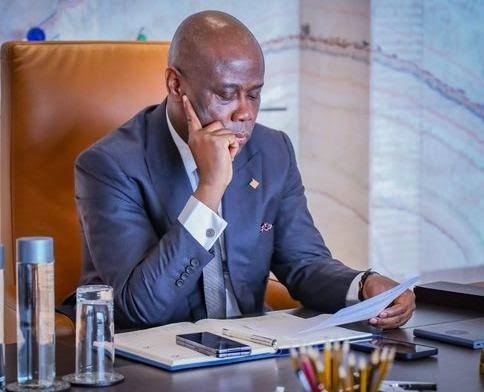
Herbert Wigwe’s Death And The Black Box Metaphor
By Clem Asika
As an inquisitive teenager growing up, I had always wondered why a certain black box was so important in an aeroplane that it was frantically searched for.
I thus considered as funny the frenzy with which the aviation authorities world over searched for it when an aircraft crashed.
What is so special about this mystery black box? Why can’t these people just buy a box of any colour and then paint it black as a replacement for the missing one they always search for whenever there is a plane crash? My callow mind would always wander and wallow in wonderment back then!
Well, it wasn’t long before I got to know that a black box is a compendium of all that transpired in a plane shortly before a crash.
In a nutshell, it gives aviators an insight into the cause of a crash or factors that lead to it.
This brings me to the tragic and heart-rending death, in a helicopter crash, of our dear brother, Herbert Wigwe, his wife, Chizoba and son, Chizzy, in faraway United States.
Before the unfortunate incident, Wigwe was one of Nigeria’s corporate Lords, a banking guru who sat atop Access Bank Holdings as CEO.
As I watched tears cascade freely down the cheeks of the high and mighty in the society during Wigwe’s burial rites, I immediately remembered the black box enigma, the aura around it and the significance it commands in the aviation world.
Yes, Wigwe and death, the grim reaper that snatched him away and dealt an excruciating blow to his family, friends and business associates, are metaphors for a black box.
According to John Donne, the legendary English poet, “Any man’s death diminishes me because I am involved in mankind”, so the overflow of emotions at Wigwe’s funeral was natural. It is only a non-living thing that will be unfeeling and unfazed in the face of such monumental loss.
But then, this uncomfortable truth: It was possible that many high flyers, men and women of timber and calibre, to borrow the late KO Mbadiwe’s phrase, who wept generously at the late Access Bank boss’ funeral did so not necessarily because his death shattered them or because they love him but because he was their black box and his death and burial meant that the black box went with him to the grave, never to be found or recovered!
Wigwe as a black box? Yes! And this is how and why: Slush funds and funds amassed under hazy circumstances may be sitting pretty good in Wigwe’s Access Bank( of course, without him knowing the source of such funds) and with the late financial wizard the only person with the code to the location of such funds.
If, before he died, he didn’t disclose the code for retrieving such funds to anyone, what it therefore means is that the funds, like a piece of information in a crashed aircraft’s black box which was never recovered, have gone with the wind, lost forever hence the free flow of tears of the owners at his funeral! You can now see the nexus or analogy between Wigwe’s death and a black box.
Former Central Bank of Nigeria, CBN Governor and former Emir of Kano, Alhaji Lamido Sanusi was one of the “weepers” at Wigwe’s funeral. Is he one of those affected by the loss of the “black box”? No one knows but there is a viral rumour that he is a part owner of Access Bank.
Also, by his admission, he entrusted his entire life savings in the care of Wigwe which he claimed was for the education of his children for he believed he would die before the late Acess Bank boss.
And talking about Sanusi, the ex-Emir’s opaque past flashes through the minds.
Sanusi’s tears at Wigwe’s funeral, his effusive words of love for Wigwe, his kind words for the departed banker, and his glowing tribute for him contrast sharply with his controversial persona.
When Sanusi and his paid agents talk glibly about building bridges and about his chummy relationship with the late Wigwe, an Igboman from Rivers, and how the latter stood by him when he was dethroned as an Emir, the late Gideon Akaluka, the young Igbo trader who was in 1995 beheaded by a band of Wahabist Islamic fundamentalists allegedly led by Sanusi for alleged discretion of the Koran, will probably turn in his grave with indignation.
How come Sanusi is now posturing as a pan-Nigerian and a broad-minded fellow weaned of Islamic fundamentalism and ethnocentric tendencies?
If indeed he has been bleached of the above toxic tendencies by the effluxion of time, then he should quickly explain to Akaluka’s family why their son deserved the cruel fate visited on him by him and his murderous gang of Wahabists.
Similarly, if Sanusi has indeed weaned himself from an ethnoreligious and narrow parochial mindset as he demonstrated by his eulogy and tears at Wigwe’s funeral, then I think the family of Rita Oruru deserves not only a public apology from the dethroned Emir but a compensation for the trauma he caused them via his rabid Islamic zealotry.
Rita Ese Oruru, do you remember her and her pathetic abduction and forceful conversion to Islam under the superintendence of Sanusi as the Emir of Kano?
Rita’s story is still fresh and leaves a deep hurt in the hearts: The abduction of Ese Rita Oruru, the youngest child of Charles Oruru and Rose Oruru, occurred on 12 August 2015 at her mother’s shop in Yenagoa local government area, Bayelsa State.
Ese, who was 13 years old at the time, was abducted by a man named Yunusa Dahiru (alias Yellow) and taken to Kano, where she was raped, forcibly Islamized and married off without her parents’ consent.
The forced conversion and marriage took place in the palace of the then Emir of Kano, Sanusi Lamido Sanusi.
Similarly, Southern Nigeria deserves an apology from ex Emir Sanusi for his sectional inclination while he held sway as the CBN Governor.
Recall that as the Governor of the apex bank, Sanusi brazenly sited all the Social Corporate Responsibility interventions of the apex bank in the North.
Meanwhile, for Sanusi and his likes who may have lost a precious black box by Wigwe’s untimely and tragic death, I say ndo, pele, sorry. Such is life, take heart!
Clem Asika writes from Ibusa, Delta State
Herbert Wigwe’s Death And The Black Box Metaphor
Features/Analysis
Surviving Lassa fever in Nigeria: The stories of Ngozi and Oluchi
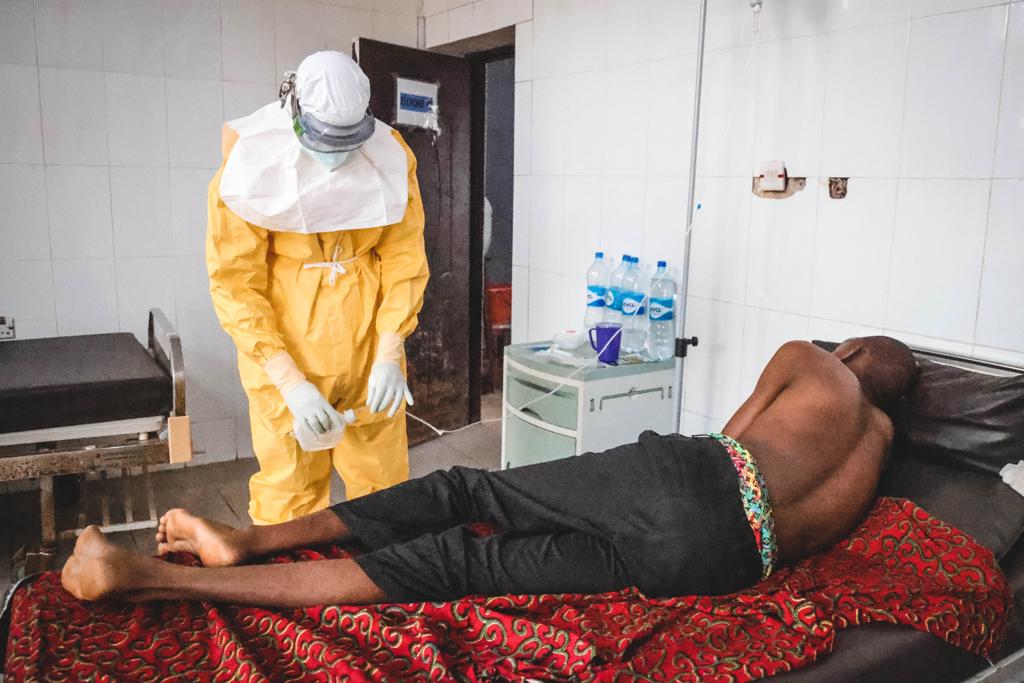
Surviving Lassa fever in Nigeria: The stories of Ngozi and Oluchi
By: Michael Mike
“My mother-in-law asked me how I was feeling, and I told her I was fine, but I knew I was not,” says Ngozi, a 28-year-old petty trader from Abakaliki. “I was stooling, vomiting and couldn’t keep my eyes open.” After trying various treatments at home, Ngozi was taken to hospital in Abakaliki, in southeast Nigeria’s Ebonyi state, where she was diagnosed with Lassa fever. “After two days there, my health deteriorated and I even lost consciousness at some point,” she says.
Lassa fever is a haemorrhagic fever that causes serious damage to various organs, reducing the body’s ability to function. The virus is contagious and can spread from person to person via bodily fluids, including saliva, urine, blood, and vomit. The disease affects 100,000 to 300,000 people every year across Western Africa and causes around 5,000 deaths. Last year in Nigeria, there were 8,978 suspected cases and 1,227 confirmed cases of Lassa fever (Nigerian Centre for Disease Control).
The city of Abakaliki has seen repeated outbreaks of the disease since 2018, when an MSF (Médecins Sans Frontières) team arrived to help identify people with symptoms and care for patients in Alex-Ekueme Federal Teaching Hospital (AE-FUTHA). Around 600 km further north, a second MSF team has been helping care for patients with Lassa fever in Tafawa Balewa hospital, Bauchi state, since 2022. Last year, the two MSF teams cared for 618 patients with suspected or confirmed Lassa fever.
Spread by rats
Lassa fever is spread by a species of rat which is found mainly in three states in eastern and southern Nigeria: Edo, Ondo and Ebonyi. When infected rodents feed on food that is left out, they leave traces of the virus via their saliva and faeces. The disease usually peaks in the dry season when rats scavenge for food around people’s houses.
“Transmission of Lassa fever occurs throughout the year, but large seasonal outbreaks occur during the dry season, from December to April, when rats leave the fields to find food from other sources, such as people’s houses,” says Ben Uzoma, MSF health promotion manager.
To help tackle the disease at source, MSF has launched a ‘vector control strategy’ in local communities in Abakaliki, which includes setting rat traps, using rodenticides and sharing health information messages on proper waste management, food preparation and storage.
Diagnostic difficulties
When a person is infected with the virus, they may experience symptoms including a fever, body aches, a stomach-ache and vomiting – symptoms very similar to those of malaria, which can make it difficult to identify cases of Lassa fever in a timely manner.
Oluchi, a 26-year-old mother of four, from Ebonyi state, does not know how she contracted the disease, but she recalls when the symptoms started. “I started having a high fever and was vomiting,” she says. “My husband took me to a private hospital, where I was administered malaria medication, but the symptoms only worsened. The doctors could not figure out what was wrong with me, so they referred me to Alex-Ekueme hospital to test for Lassa fever.”
To help detect cases of Lassa fever early, MSF has developed a screening form in collaboration with Alex-Ekueme hospital, with which healthcare workers can spot suspected cases by recording and analysing patients’ general and major symptoms and matching it with their health history and contact with rodents or an infected person.
Patient care
As soon as a patient arrives at AE-FUTHA with suspected Lassa fever, they are admitted to the hospital’s isolation centre, built by MSF. Patients who test positive are immediately moved to the ‘virology unit’ for treatment. This barrier measure is put in place to separate Lassa fever patients from other patients and minimise the risk of infection for healthcare workers and patients’ relatives.
“After my test came out positive, I started receiving treatment,” says Ngozi. “They gave me food, water, and everything I needed. So many doctors and nurses constantly checked on me throughout the day, and after seven days my test results came out negative.”
Emotional support
Contracting Lassa fever can take a toll on one’s emotional and psychological wellbeing. MSF mental health teams provide counselling and psychosocial support to patients with suspected or confirmed Lassa fever throughout their hospital stay, through individual and group discussions, as well as playing games and doing puzzles.
“My healing was rapid and I received a lot of support from mental health counsellors,” says Ngozi. “They were always present during my treatment.”
Oluchi’s experience with Lassa was so harrowing that she thought she was going to die. “I got so scared at the thought of dying – I was terrified,” she says. “But one of the MSF mental health counsellors came often to comfort me and told me not to worry.”
Before discharge, patients are provided with information on expected symptoms and potential mental health impacts, so they are well-informed and prepared for life as a survivor of Lassa fever. Patients’ families also receive support from the mental health team to help them understand and deal with their relatives’ condition. “At the time, I was short-tempered,” remembers Ngozi. “Thankfully, my family understood why, as the mental health counsellor had informed them beforehand.”
Challenges of tackling Lassa fever
Despite MSF’s efforts, challenges remain in tackling outbreaks of the disease in Nigeria. These include a lack of awareness among health workers, a shortage of training and research on Lassa fever, limited resources in comparison to the cost of treatment, and limited access to healthcare facilities. Alex-Ekueme Federal Teaching Hospital is the only treatment centre for Lassa fever in southeast Nigeria, while most hospitals across Western Africa are not fully equipped to handle complex cases.
Meanwhile, for many people with symptoms, seeking medical attention in a hospital remains the last choice. Sick people usually start by consulting medicine sellers or traditional healers, with the result that patients often show up late at hospital with severe complications. By this stage, their chances of survival may be slim.
Survivors of Lassa fever also often face stigma from their communities due to a widespread lack of knowledge about the disease; some people mistakenly believe that survivors are contagious and that catching the disease is a sign of poor hygiene or a punishment from God.
“When I returned home, I was excluded by my peers,” says Oluchi. “There was a rumour going around that I had been in the mortuary because of how skinny I was. People were running away from me because of the contagious nature of the disease.”
After leaving hospital and returning to their communities, survivors continue to receive support from MSF’s mental health staff, who do their best to ensure that they are reintegrated back into their communities.
Working with communities
At the same time, MSF health promoters work with communities to counter misinformation and lack of knowledge about Lassa fever. “We let people know that those who have been treated and cured from Lassa fever are no longer contagious,” says Uzoma.
During the peak season of the disease, MSF’s health promotion teams organise health education and community engagement activities, targeting religious centres, markets, and schools in hotspot areas. With the help of flyers, leaflets, flip charts, demonstrations and radio spots, the teams share information on Lassa fever and make sure that people know where they can receive free medical care.
The work of MSF’s health promoters continues year-round. “We know that behavioural change does not happen instantly and that we must continuously talk about it before people start changing,” says Uzoma.
Surviving Lassa fever in Nigeria: the stories of Ngozi and Oluchi
Features/Analysis
UMTH: How Professor Ahidjo’s Transformation Agenda Impacted the Information Unit
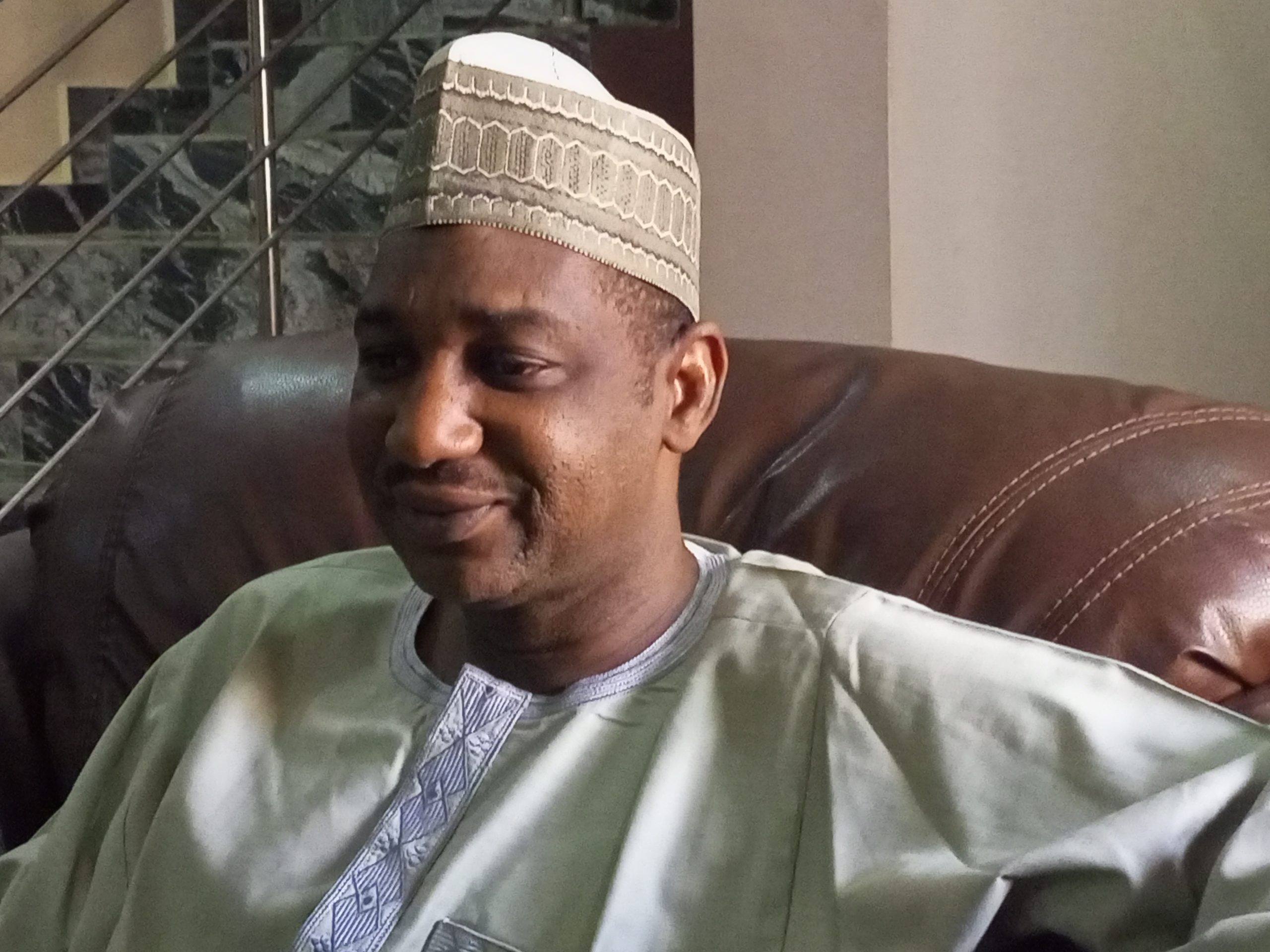
UMTH: How Professor Ahidjo’s Transformation Agenda Impacted the Information Unit
By: James Bwala
The UMTH PR and Information Department is statutorily responsible for presenting the hospital objectives, decisions, and actions in their true and most desirable perspective, contributing to the awareness of governments, institutions, and the general public about UMTH and its activities, while presenting UMTH as a professional institution in the field of medicine, data analysis, and projections. But until the CMD took deliberate steps to rejigger this unit, many stories about the transformation that has been going on in this institution would barely get to the public.
The PR and Information Unit has performed primarily on internal communications, leading a traditional way of telling its stories only to a very few individuals without much effort to tell its story beyond the four corners of the hospital. In fact, many staff confesses to the fact that they have started getting readily available information on the activities going on in the hospital with driven interest only when the CMD took over and shifted focus to getting the public’s attention through the active reporting of its activities.

“The decision of the management team to engage public media professionals has helped the hospital in no small way in our efforts to achieve the desired outcome for our activities. It has also strategically helped us in blowing our trumpet to what we have achieved as well as shielding us from mischieve makers and armed chair commentators about what is and what is not and all the yes and no questions that we have to say for ourselves, especially in the court of public opinion or in the circle of murky waters when mischievous individuals seek to pull up in their fashion.” The CMD said this during a chat with NEWSng.
Professor Ahidjo had been in the system long enough to understand the matrix of operations and lead a management that speaks volumes about its achievements. Therefore, when he came as CMD, he understood that the department and unit he needed to work closely with was also the PR and Information Unit, as it holds the key to making the day better if given the needed attention to function well. With the new approach to gatekeeping, he quickly moves to ensure that he increases staff strength and conditioning by training and retraining through consultancies for results.
“There are improvements in the quality of staff because Ahidjo also engaged some journalists to work with the information department to achieve the desired results. He also bought the necessary equipment for quality production from a videographer to steal cameras and computers. The information unit at the UMTH is now better. It has been very silent in the past, but since Professor Ahidjo came in as CMD, the information department has come alive. Although not without some little needs for improvement, the work that Professor Ahidjo did in transforming the PR and Information Unit is commendable. What I think is needed at the moment is for the unit to grow into a directorate since the federal government has given approval for such across the federal institutions. If this unit is upgraded to a directorate, it is going to have a greater impact on discharging duty.. Dauda Iliya, the Chairman of the Nigerian Union of Journalists in Borno State, who has been close to the information department, made this observation while speaking to NEWSng on the current relationship the journalists in Borno enjoy with the PR and Information Unit at UMTH.
Speaking also to a cross-section of journalists in Maiduguri, they said that
In many organizations or institutions, the PR and Information Unit remains in the background or relegated in significance, but at the UMTH, it is understood that the administrator is well informed about their duties and always carries the department along in the discharge of his responsibility. Why an organization or administrator may not have the same understanding as what is obtained under Ahidjo’s management team is largely due to the little or no attention given to this department despite its importance to such an organization or institution.
According to journalists in Borno, the department takes the lead in ensuring that every department or unit is gatekeeper to ensure the right information gets to the public, deescalates rumors, and protects the organization or institution from media mercenaries, who are constantly on a scavenger hunt for negative stories for a targeted analysis, which usually comes hard on the executives and top management of such organizations or institutions. At the UMTH, they recount the number of times journalists visited, and the unit plays the voice and role in linking journalists to either the management or doctors that need to speak concerning their operations, and Professor Ahmed Ahidjo always has his doors open for questions.
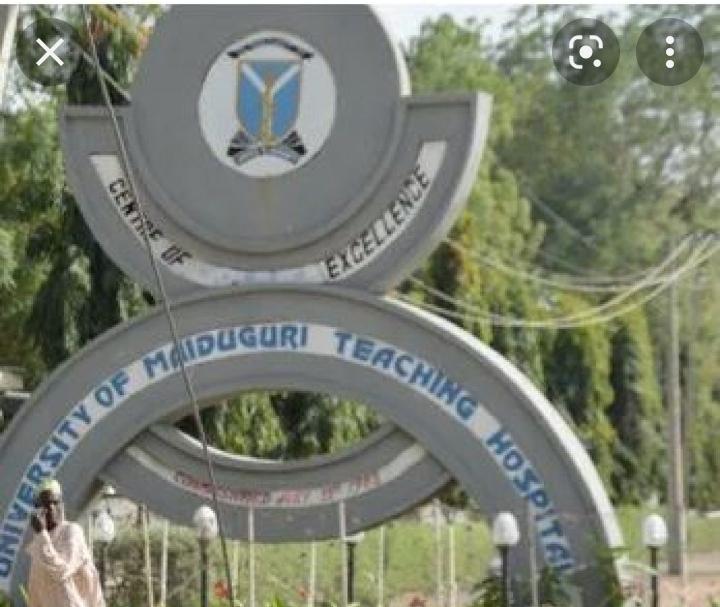
In their findings on the relationships established between the PR and Information Unit with journalists in Borno State, media practitioners described the efforts that resulted in such a harmonious relationship with UMTH to largely the accessibility and open-mindedness of the CMD when it comes to media. According to them, it is easy to know who is in charge of an organization or institution from the reception of anyone seeking to make journalistic findings from discussions with the departmental head of the PR and Information Unit.
READ ALSO: https://dailypost.ng/2024/01/17/many-killed-as-iswap-boko-haram-fighters-clash-in-lake-chad/
“It was different with UMTH under Professor Ahidjo. Several times I go there, and it is easy for me to access the information I need to report on. When it became necessary that I needed to speak with the CMD or CMAC, the connection from the department told me that the management team understood the importance of the information unit..”One of the journalists said:.
While elaborating on his understanding with the PR and Information Unit at UMTH, the Metro-Watch Correspondent, Bodunrin Kayode, told NEWSng that, “I will say that Professor Ahidjo is a PR official himself. He is the No. 1 PR official at UMTH. To me, he is not just an administrator. He is not like other people who just do their job and do not care about the image of their institution. You know there are some people who, when you give them a job, will focus on their job and forget about other things. But in the case of Ahidjo, I will say that he is concerned and cares about the image of the hospital. The few times that I have interacted with him in terms of reporting, he always gives positive input into what should be the outcome. He cares much about what news comes out of the hospital, and as such, he cares to ensure that the right thing is done. He thinks that even though he does not have the power to be 100 percent perfect, he tries to do his best to attract a positive image to the institution, thereby making him very close to the unit that controls the information flow of the institution.
“I think information management is not restricted to professionals; any wise person should care about his or her image and the image of the organization he or she is heading. It is a fact that Professor Ahidjo is a wise person who can count on that sense. He is very sensitive to reactions to issues coming from within or outside that come to his hearing. I recall a time when a colleague told me about information he received about the hospital, and I asked the CMD for clarification. He said, ‘Kayode, you have been here for a while now to know that such information is not true. That, to me, shows the level of care he has about information filtering about the institution under his administration. This is unlike how some administrators take issues concerning them or their organization and, in the end, fall into trouble.
“Professor Ahmed Ahidjo will always contribute to what is humanly possible. I also think that he has a very good relationship with his staff generally. There was a time I was chatting with the PRO, Mrs. Justina Anaso, and she described the CMD as a “goodman.” In fact, she said that he operates with her department as family. He tries to bring everybody close. The CMD has been very creative, and his impact is felt in all the departments and units in the UMTH. Although I will say that there are still needs that require attention in the PR and Information Unit, I have seen new faces of staff, which means that the CMD is doing something by bringing more hands to help him achieve more in the hospital. I believe some of the achievements to be made are coming gradually, but in general, he has done much.
“He has created so many centers in the hospital and is working round the clock with his management team to leave a footprint in the hospital. I hope that he will pull out the PR and Information Unit to have their own structure. That is a major impact he has to give them to enable them to operate as a directorate. I believe with a directorate of information, he will create a newsroom where journalists can come to brainstorm and create more positive impact for effective coverage of the activities in this large hospital.”
UMTH: How Professor Ahidjo’s Transformation Agenda Impacted the Information Unit
-

 News1 month ago
News1 month agoRoger Federer’s Shock as DNA Results Reveal Myla and Charlene Are Not His Biological Children
-

 News1 month ago
News1 month agoEYN: Rev. Billi, Distortion of History, and The Living Tamarind Tree
-
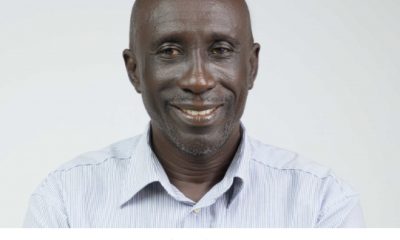
 ACADEMICS2 months ago
ACADEMICS2 months agoA History of Biu” (2015) and The Lingering Bura-Pabir Question (1)
-
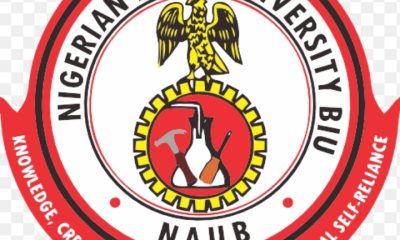
 Columns2 months ago
Columns2 months agoArmy University Biu: There is certain interest, but certainly not from Borno.
-

 Opinions2 years ago
Opinions2 years agoTHE PLIGHT OF FARIDA
-

 Opinions2 months ago
Opinions2 months agoTinubu,Shettima: The epidemic of economic, insecurity in Nigeria
-
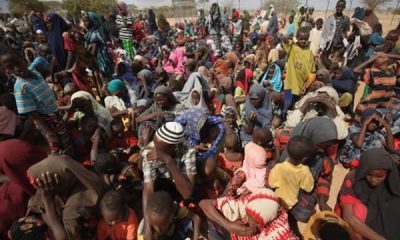
 National News2 months ago
National News2 months agoFraud and Mismanagement Rock INGO’s IDP Cash Assistance Effort in Bama
-
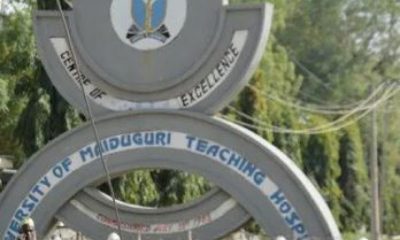
 Opinions4 weeks ago
Opinions4 weeks agoUMTH:…and the testimonies of patients and patient relations





